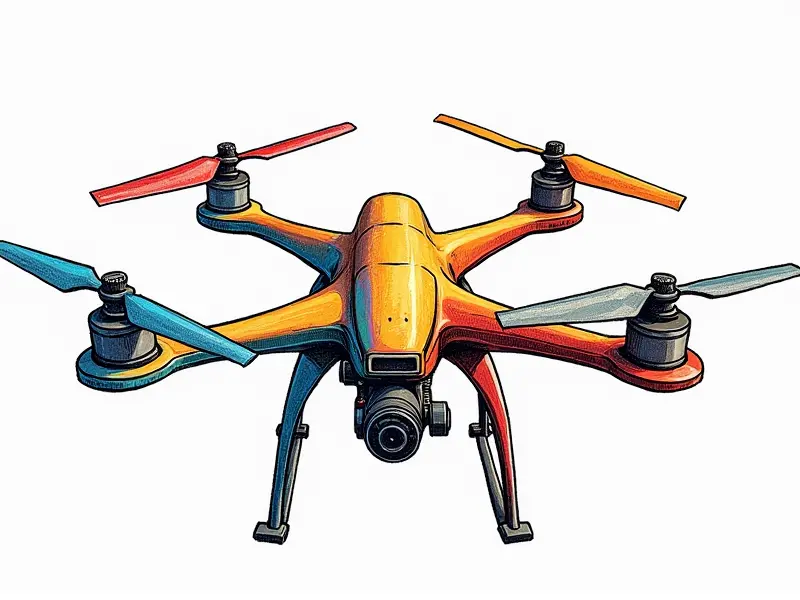Drone cinematography techniques

Mastering Drone Cinematography Basics
Drone cinematography has revolutionized the way filmmakers capture stunning aerial shots. To master this art, it's essential to understand the basics of drone operation and camera settings. Start by familiarizing yourself with your drone’s controls and flight modes. Practice flying in different environments to get a feel for how wind and other factors affect your drone's stability.
Understanding ISO, shutter speed, and aperture is crucial for achieving optimal exposure and image quality. Experiment with these settings to find the right balance between light sensitivity, motion blur, and depth of field. Additionally, learn about gimbal stabilization and its role in maintaining smooth shots despite movement.
Top Tips for Stunning Aerial Shots
To capture breathtaking aerial footage, consider the following tips:
- Plan Your Shot: Before taking off, visualize your shot and plan your drone's path. Use a map or app to mark key points of interest.
- Use Leading Lines: Incorporate natural lines such as roads, rivers, or buildings to guide the viewer’s eye through the frame.
- Shoot During Golden Hour: The soft light during sunrise and sunset can add a dramatic touch to your footage.
- Vary Your Angles: Experiment with different heights and perspectives to create dynamic compositions.
Essential Gear for Drone Filmmakers
To enhance your drone cinematography, invest in the following gear:
- High-Quality Camera Module: A camera module with high resolution and good low-light performance is essential.
- Battery Pack: Extra batteries ensure you can capture longer sequences without interruptions.
- Remote Controller: Choose a controller that offers precise control over your drone's movements.
- Protective Case: A durable case will safeguard your equipment during transport and storage.
Capturing Dynamic Angles with Drones
Drones offer unparalleled flexibility in capturing dynamic angles. Experiment with low-angle shots, high-altitude panoramas, and sweeping aerial views to add depth and interest to your footage. Use the drone's tilt and pan functions creatively to follow moving subjects or reveal hidden details.
Lighting Techniques in Drone Photography
Mastery of lighting is crucial for stunning aerial photography:
- Natural Light: Utilize natural light sources like the sun, moon, and stars to create mood and atmosphere.
- Reflectors and Diffusers: Use reflectors to bounce light into shadowed areas or diffusers to soften harsh sunlight.
- Light Painting: Introduce artificial lights in your scene for creative effects, such as illuminating a building at night.
Composition Rules for Sky-High Videos
Apply classic composition rules to elevate your aerial footage:
- The Rule of Thirds: Position key elements along the grid lines or intersections for balanced compositions.
- Framing: Use natural frames like archways, windows, or trees to draw attention to your subject.
- Balanced Composition: Ensure that visual weight is evenly distributed across the frame.
Post-Processing Secrets for Drone Footage
Enhance your drone footage with post-processing techniques:
- Color Grading: Adjust color tones to match the mood and style of your project.
- Noise Reduction: Remove graininess caused by high ISO settings for cleaner images.
- Sharpening: Increase clarity without over-processing, maintaining natural texture.
Creating Smooth Time-Lapse Sequences
To create smooth time-lapse sequences:
- Stable Platform: Use a gimbal or tripod to ensure consistent framing throughout the sequence.
- Consistent Interval: Set your drone to capture images at regular intervals for seamless transitions.
- Varying Angles: Change camera angles periodically to add variety and interest to your time-lapse.
Advanced Camera Movements with Drones
Push the boundaries of drone cinematography by experimenting with advanced camera movements:
- Pan and Tilt: Combine horizontal and vertical movements for dynamic shots.
- Orbiting: Circle around a subject to capture its surroundings from multiple angles.
- Tracking Shots: Follow moving subjects while maintaining smooth, steady footage.
Essential Camera Settings for Drones
Tailor your camera settings for optimal performance:
- ISO: Adjust ISO to balance light sensitivity and noise levels.
- Shutter Speed: Control motion blur by adjusting shutter speed according to the scene's movement.
- Aperture: Set aperture for desired depth of field, focusing on either a narrow or wide range.
Ethical Considerations in Drone Filming
Respect privacy and adhere to regulations when filming with drones:
- Privacy Laws: Be aware of local laws regarding the recording of individuals without consent.
- No-Fly Zones: Avoid flying in restricted areas such as airports, military bases, or private property.
- Ethical Filming Practices: Obtain permission from landowners and respect personal boundaries.
Conclusion
Mastery of drone cinematography requires a blend of technical skill, creative vision, and ethical responsibility. By understanding the basics, experimenting with advanced techniques, and adhering to legal guidelines, you can capture breathtaking aerial footage that elevates your projects to new heights.

